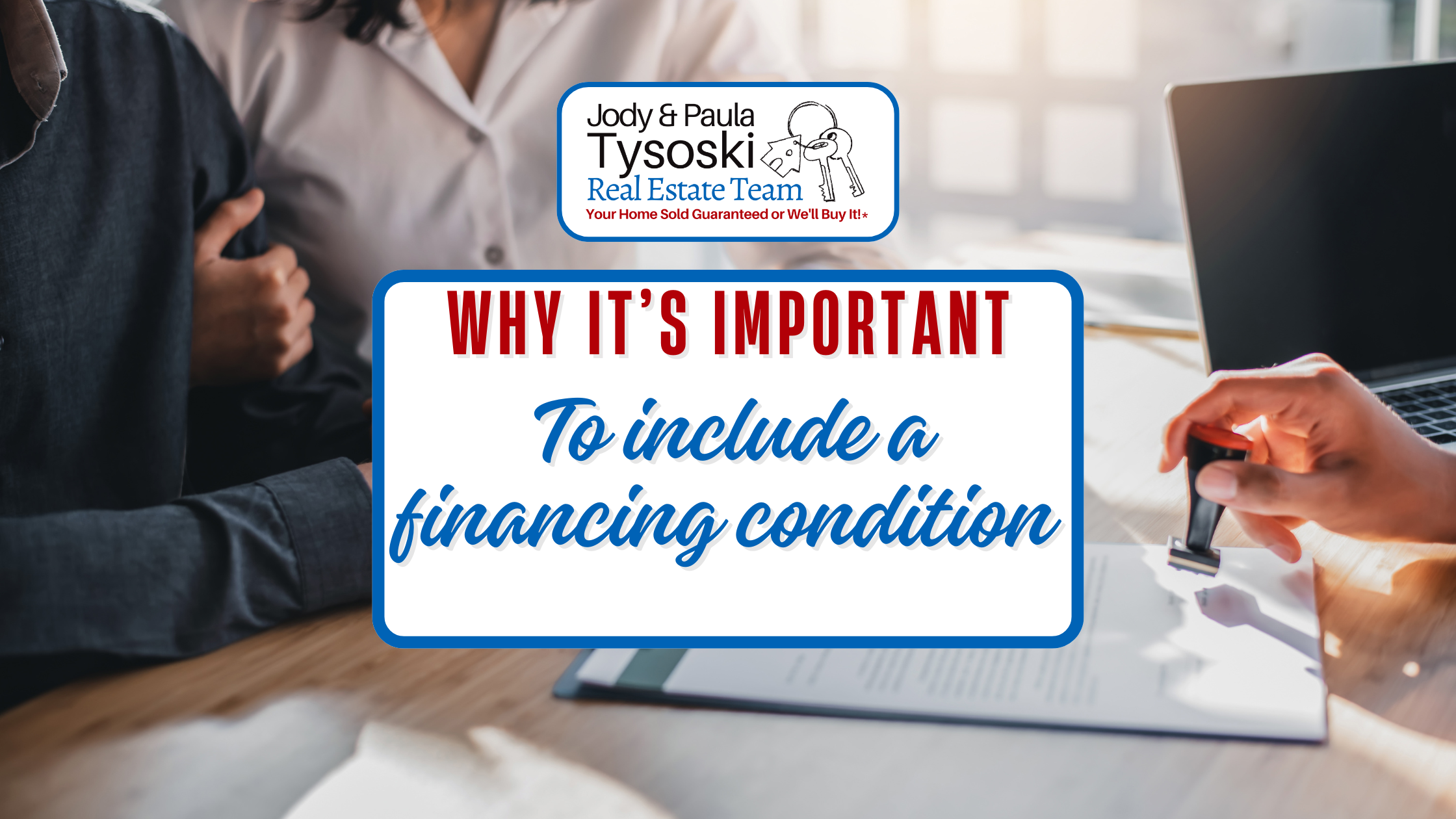Should a financing condition be included when purchasing a home?
Paula Tysoski
Wednesday, September 4, 2024

Why it’s important than ever to include a financing condition when purchasing a home.
Lending institutions providing mortgages are getting appraisals done and sticking to those appraisal values. So what happens if a Buyer purchases a property for $750,000 and the bank appraisal comes in at $700,000?+ $750,000 Purchases price with $750,000 appraisal value
- $50,000 (6.67%) Minimum downpayment
+ $28,000 Mortgage Insurance
+ $11,475 Land Transfer Tax
+ $ 2,240 PST on Land Transfer Tax
+ $ 1,000 Lawyer Fee (total amount varies)
+ $ 900 Title Insurance (total amount varies)
+ $ 400 Appraisal (total amount varies)
= $ 66,415 cash needed to close

+ $750,000 Purchases price with $700,000 appraisal value
- $ 45,000 (6.43%) Minimum downpayment
+ $26,200 Mortgage Insurance
+ $10,475 Land Transfer Tax
+ $ 2,096 PST on Land Transfer Tax
+ $ 1,000 Lawyer Fee (total amount varies)
+ $ 900 Title Insurance (total amount varies)
+ $ 400 Appraisal (total amount varies)
+ $50,000 The difference between purchase price and appraisal value
= $110,271 cash needed to close
This calculation above assumes the extra $50,000 cash is available. If it is not, a buyer may have to go to alternative financing and pay a considerably higher interest rate to close the sale.
There is no option to walk away from a firm deal and not close the sale. The consequences are very costly and could involve not only the original buyers own legal fees but also any fees from sellers and buyers ahead who are unable to close on homes they are buying.

Recent market conditions have led to significant challenges for some homeowners. Those who purchased properties at peak prices and subsequently faced mortgage renewals at higher interest rates are experiencing financial strain. In some cases, homeowners are confronted with monthly payments that have doubled over initial expectations. As a result, the real estate market is witnessing an increase in power of sale listings. These circumstances have created a situation where many sellers must and need buyers to help them out of difficult financial positions. This trend underscores the importance of careful financial planning and the potential risks associated with rapidly changing market conditions in the real estate sector.
The Stress Test, introduced in 2016, was designed to alleviate financial pressure in the event of interest rate increases and has proven to be significantly effective. Currently, when applying for a new mortgage or changing lenders, applicants must demonstrate the financial capacity to manage a mortgage rate of 5.25% or 2% above their offered interest rate, whichever is higher. It's important to note, however, that this measure does not prevent homeowners from accumulating additional debt after their mortgage has been approved and is in place.
It’s is not all doom and gloom though! There are many success stories and a good majority home buyers and home sellers were not involved in the crazy market of a few years ago, so basically it is business as usual for them. On average over the past 50 years, the interest rate is 7%, at 4.45% today we are doing good!
For Buyers looking to buy, the first step is to get pre approved for a mortgage. Consulting with one of our trusted mortgage professionals here will give you the information you need to decide if the time is right for you to buy.
For Sellers looking to sell, the first step is to find out what your home will sell for in today’s market and what a home you may be interested in will cost in today’s market. Get our free no obligation home evaluation here.

We would like to hear from you! If you have any questions, please do not hesitate to contact us. We are always looking forward to hearing from you! We will do our best to reply to you within 24 hours !
